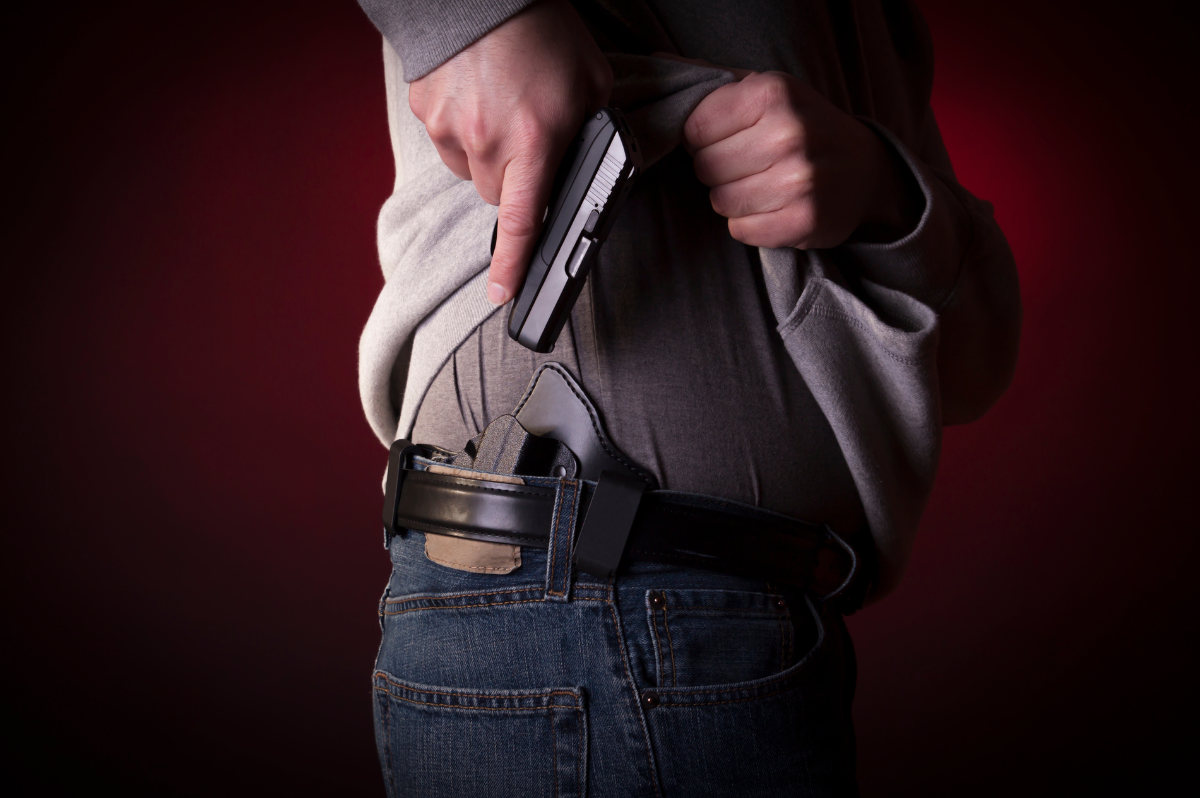No product found in cart!

Why Do You Need A Holster?
A holster is an incredibly important accessory for any handgun. Whether or not you intend to carry a handgun on your person, holsters are great tools for protecting the trigger of your gun from negligent discharges.
Choosing the right type of holster for your handgun can make or break your ability and desire to carry. If you’re uncomfortable or your holster doesn’t allow for sufficient concealability, you may as well not have one at all.
In this article we’ll outline everything you need to consider such as your handgun model/type, different holster materials, and carry positions to choose a holster that’s right for you.
Handgun Model
This may seem obvious, but the first step in selecting a holster is choosing one that’s meant for your specific model of handgun.
Having the wrong holster for your handgun will render it useless, so make sure to choose carefully. If you have other attachments such as a red dot optic, weapon light, or laser, you’ll need to factor that in as well.
Since many models of handguns have different versions or generations, also make sure your holster matches up with those specifics as well.
Holster Material
Next, you’ll need to decide what kind of material you want for your holster. The most common types of holster material are leather, nylon, carbon fiber, and Kydex, which is a type of plastic. Some holsters can be a hybrid of 2 or 3 of these different types of materials.
Leather is the oldest type of material for handgun holsters. Its durable, looks cool, and is for the most part comfortable. On the other hand, leather holsters are not as form fitting to the firearm and can be a little bit heavier. Leather holsters can also cause coatings or paint on firearms to fade due to friction, which is another thing to keep in mind.
Nylon holsters are lightweight and are typically designed in a manner to accept multiple different models of firearms. However, nylon holsters aren’t as sturdy and don’t retain guns as well as other more form fitting types of materials.
Kydex and carbon fiber holsters have gained popularity over the last decade and are the most popular holster material these days. Kydex and carbon fiber can be perfectly formed to the specific handgun model, which results in a snug and compact fit. These materials are also very lightweight, but because they’re completely solid, they can be uncomfortable.
Carry Position
The position where you plan to carry your firearm also plays a large part in the type of holster that’s right for you. Some holsters are only designed for a specific carry position, some can achieve any carry position, and some are better at some carry positions than others.
Holster carry positions are often referred to by how they appear on your waist in relation to an analog clock. For example, the 1 o’ clock position is an appendix carry. Make sure to choose a holster that is best suited for your desired carry position.
Your carry position will also dictate the size and type of holster you can use. In general, if you want to appendix carry, you’ll generally be able to carry a larger pistol and holster than if you were to carry on your hip.
Inside or Outside the Waistband Carry
Inside the waistband and outside the waistband are the two most common types of handgun holsters. They mean exactly as they’re described and have different applications depending on what you’re trying to achieve.
For open carry and if you have clothing to cover it up, outside the waistband is a great choice. Outside the waistband carry is generally more comfortable and your gun is more accessible, but it can be difficult to conceal without sufficient clothing.
If you intend to carry as concealed as possible, inside the waistband offers the best concealability. Inside the waistband carry can sometimes be uncomfortable, but you’ll be able to carry concealed in as little as jeans and a simple t-shirt.
Carry Belt
Another important aspect when it comes to choosing a holster is your carry belt. When carrying a handgun on your person, a sturdy belt is required to hold the extra weight and secure it firmly.
In addition, make sure your holster clip or loops can accommodate the width and thickness of your belt. The wrong combination of belt and holster will make carrying a handgun unnecessarily cumbersome.
Spare Magazine Needs
Last but not least, if you plan to carry a semi-automatic handgun, you’ll probably need some spare magazines to be prepared for the worst.
While you can easily carry a spare magazine or two in a pocket, it helps to have spare magazine pouches or clips on your belt. Some holsters integrate spare magazine storage into the holster, but some don’t. You can also choose to have standalone magazine clips that you can attach to your belt, which can be used with any holster.
Conclusion
Choosing the right holster for your needs is extremely important if you plan to everyday carry your handgun. The wrong holster will make carrying uncomfortable, be difficult to conceal, and limit your ability to access it in time to make a difference.
Before you choose a handgun holster, make sure its correct to your handgun model and most importantly try a bunch of different holsters if you can see what you like.